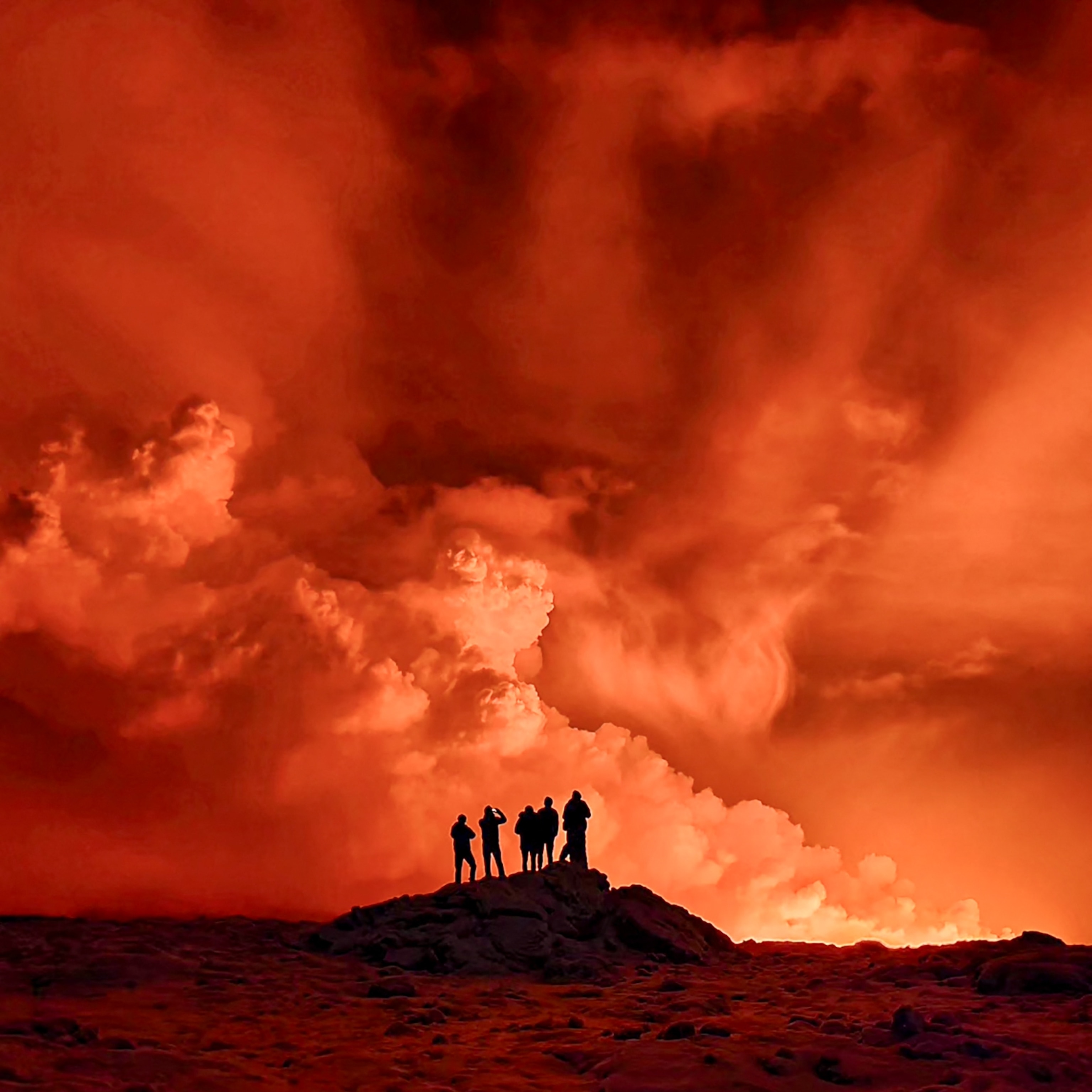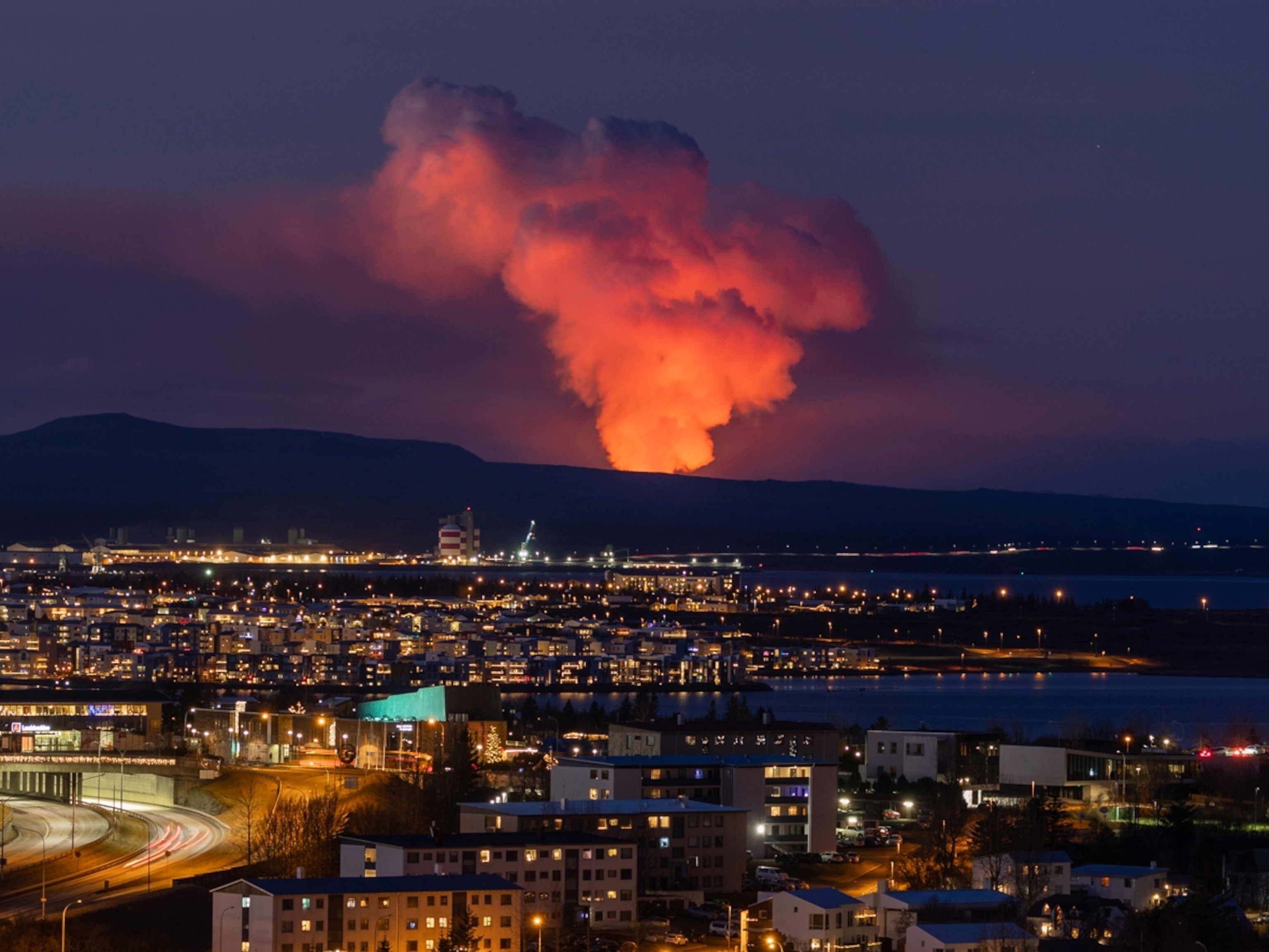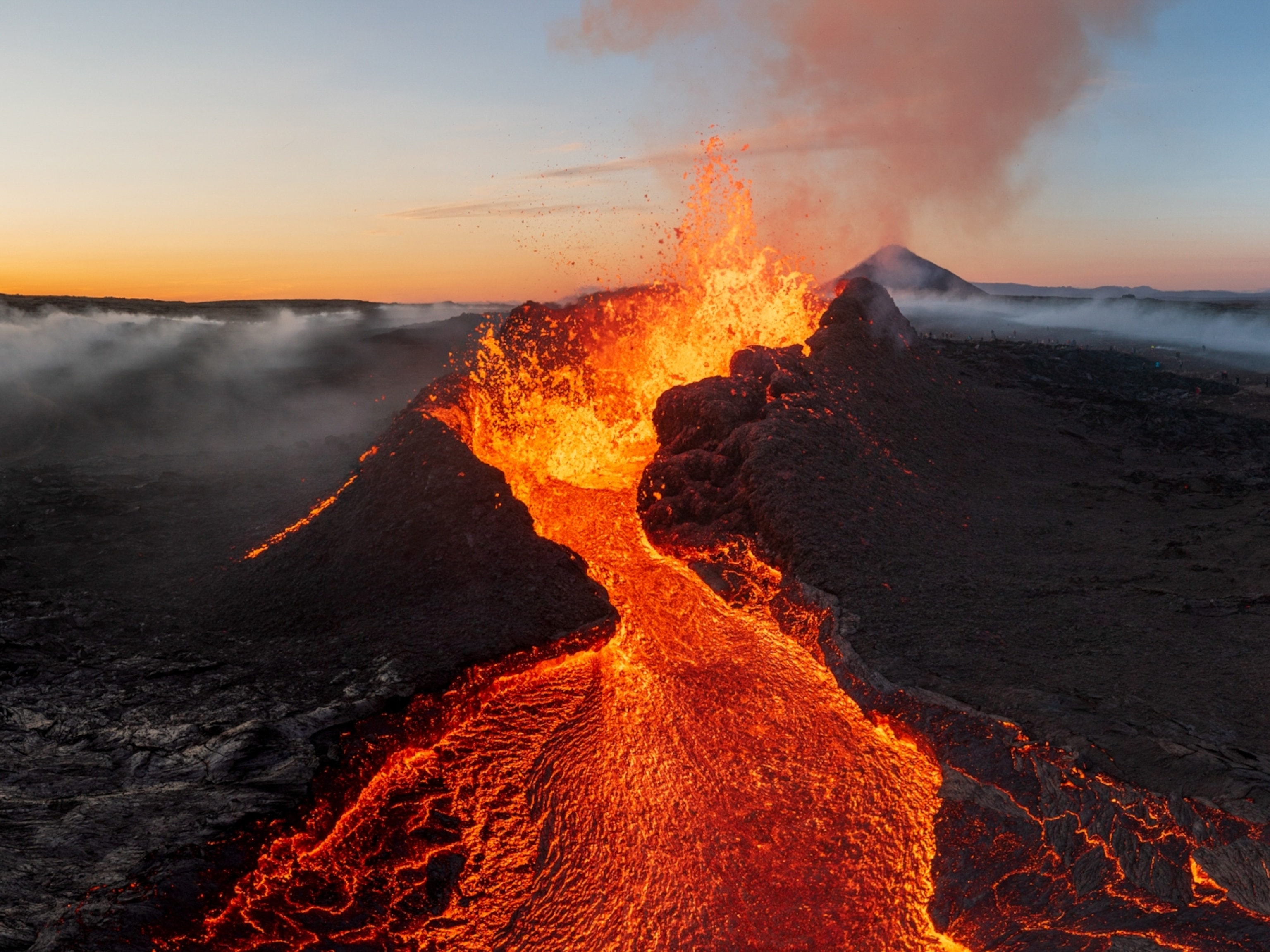Video: Adventurers and Drones Go Into the Volcano for Science
“While I was perfectly aware of the danger, it was hard not to be mesmerized by the rare chance to experience the incredible energy of the Earth’s underlying forces,” says Sam Cossman, who one month after quitting his tech job found himself peering into the lava lake of a volcano in the South Pacific. Ambrym’s crater, Marum, located along the Ring of Fire in the Vanuatu Archipelago, is home to one of only seven permanent lava lakes in the world. He wore a custom-built industrial proximity heat suit to protect him from the 1,000-degree F temps and splattering molten rock.
The adventurer and filmmaker was following his dream of using the latest technology to aid in cutting-edge exploration (watch his recent short film). As expedition leader, he assembled the team—including climber and photographer Brad Ambrose, videographer Conor Toumarkine, drone expert Simon Jardine, and geobiologist Jeff Marlow—to use drones to create a first of its kind 3-D map of the volcano. Unfortunately, not all the drones survived. But the resulting data will help scientists better understand volcanic activity.
We asked him to tell us about seeing a volcano like never before.
What was it like to look over the volcano’s edge?
It’s an out-of-body experience where your brain has a hard time processing what your eyes are seeing. Blasted by the intense heat—more than 1,000 degrees F—of a roiling lake of lava the size of a football field from just fifteen meters away, I found myself contemplating my own mortality. Listening to the deafening splashes of molten rock was like listening to the heartbeat of the planet. While I was perfectly aware of the danger, it was hard not to be mesmerized by the rare chance to experience the incredible energy of the Earth’s underlying forces.
The blasts of heat carrying toxic gases were strong enough to knock me off my feet and were so hot that they melted my face shield and respirator. The volcanic activity fluctuated from moment to moment, sometimes splashing lava above the lip where I was standing and littering the ground around me with red-hot lava bombs.
The experience was both terrifying and inspirational and left me feeling a heightened sense of gratitude for the fragility and brevity of life. It served as a wake-up call to chase my dreams and make a difference.
Do you think risk, or risking your life, is an inherent part of adventure?
My dad instilled this thought in me since I was a young boy, “If you want to launch big ships, you have to go where the water is deep.” I believe adventure is any experience that has an uncertain outcome that requires you to step out of your element and push past personal boundaries to accomplish a task. The possibility of death is certainly on one end of the spectrum of risk and happens to be a component to many of my adventures. That said, the art of adventure is a lifestyle, and by no means is the possibility of death a prerequisite.
What was the job you left and how did you have the courage to make that change?
Previously I worked with a tech start-up in Silicon Valley that builds software for adventure companies. It was a wonderful product and team, but my first trip to the volcano in September 2014, reignited my passion for adventure and filmmaking. I knew deep down that if I didn’t take the leap to pursue this dream, I would have always be left wondering what if….
Did you have a lot of savings tucked away?
No, when I quit my job, I had a few thousand dollars in my bank account. Teetering on the edge of financial ruin was a scary place to be. I was very fortunate however, to partner with and be sponsored by Kenu.com, a mobile photography company. Without their support, the expedition would not have been possible. Not everyone agrees with my decision to throw in the towel on a promising career in exchange for such a nebulous pursuit, but if you want something badly enough, sometimes you just have to take a chance. Only time will tell, I suppose, but I believe this to be the right path.

Tell us why this drone footage is special?
I believe we are at the dawn of a new age of exploration, one that greatly benefits from the use of modern technology and more contemporary set of field tools. Our usage of drones contributed to the successful completion of our mission. The drones enabled us to navigate around the gas plumes and perpetually shifting clouds (something that satellite imagery is unable to do) to shoot a series of thousands of images which could be stitched together with photogrammetry software to create the first true to scale, 3-D model of a volcanic crater and lava lake. With drones and GPS, we are able to reproducibly report real-time measurements and dimensions of the crater and track change over time, which improves our knowledge of the volcanic process. We were also able to extract volumetric data and identify new hotspots which helps informs risk levels.
How did you use the drones?
In partnership with DJI and Pix4D, I leveraged the Phantom drone as a critical tool for advancing the scientific goals of our expedition. The Phantom served as our eye in the sky, identifying obstacles, hazards, and optimal descent routes. Additionally, the technology aided in identifying previously unknown vents and other hazardous eruptive features.
The drone was also useful in identifying collection sites for time-zero (red hot) lava sampling. To collect samples, we approached the lava lake in very close proximity (less than 15 meters away where the ambient temperatures can exceed 1,000 degrees F). The drone helped us determine the optimal window of timing for collection by providing real-time reporting of shifting wind directions of super heated toxic gases and determining deadly lava splash footprints in designated sampling zones.
So is there life inside the crater?
Geobiologist Jeff Marlow got us to collect time-zero lava samples with the goal of understanding how microbial life of extreme environments colonizes newly formed earth. This has implications for how life could form in other extreme environments on our planet and beyond.
Additionally, we collected samples for analog testing the recently selected Mars 2020 Mission Rover instrument, SHERLOC, which will be used to search for signs of past life on Mars. Such a discovery could inform how humans can use natural resources available on Mars for survival and would likely transform the future exploration of another world.

Tell us about your special suit that protected you from the heat of the lava lake?
In order to approach the 2,000 degree F lava in close range, I wore a custom-built industrial proximity heat suit with an aluminized fiberglass shell and Nomex, fire retardant liner. The suit is built to withstand radiant temperatures of up to 3,000 degrees F. I worked with and was supported by NEWTEX, a pioneer in the niche thermal management apparel industry. The heat-protective face shield is constructed from a polycarbonate, gold-plated lens to filter out strong infra-red and ultra-violet radiation while still absorbing visible light. This is the same material used on spacecraft and astronaut visors.
You are not a scientist, correct? How do you define your role as an adventurer?
Correct, I’m not a scientist. I believe my role as an explorer/filmmaker is to unearth, create, protect, and inspire. I’m personally fascinated by the world’s unknown and misunderstood phenomenon. By levering tech to document my journeys in an innovative way, I hope to create extraordinary content that reveals mysteries of the world which are capable of driving positive change, promoting environmental stewardship, and inspiring others to chase their own dreams, whatever they may be.
You May Also Like
Go Further
Animals
- Octopuses have a lot of secrets. Can you guess 8 of them?
- Animals
- Feature
Octopuses have a lot of secrets. Can you guess 8 of them? - This biologist and her rescue dog help protect bears in the AndesThis biologist and her rescue dog help protect bears in the Andes
- An octopus invited this writer into her tank—and her secret worldAn octopus invited this writer into her tank—and her secret world
- Peace-loving bonobos are more aggressive than we thoughtPeace-loving bonobos are more aggressive than we thought
Environment
- Listen to 30 years of climate change transformed into haunting musicListen to 30 years of climate change transformed into haunting music
- This ancient society tried to stop El Niño—with child sacrificeThis ancient society tried to stop El Niño—with child sacrifice
- U.S. plans to clean its drinking water. What does that mean?U.S. plans to clean its drinking water. What does that mean?
- Food systems: supporting the triangle of food security, Video Story
- Paid Content
Food systems: supporting the triangle of food security - Will we ever solve the mystery of the Mima mounds?Will we ever solve the mystery of the Mima mounds?
History & Culture
- Strange clues in a Maya temple reveal a fiery political dramaStrange clues in a Maya temple reveal a fiery political drama
- How technology is revealing secrets in these ancient scrollsHow technology is revealing secrets in these ancient scrolls
- Pilgrimages aren’t just spiritual anymore. They’re a workout.Pilgrimages aren’t just spiritual anymore. They’re a workout.
- This ancient society tried to stop El Niño—with child sacrificeThis ancient society tried to stop El Niño—with child sacrifice
- This ancient cure was just revived in a lab. Does it work?This ancient cure was just revived in a lab. Does it work?
Science
- The unexpected health benefits of Ozempic and MounjaroThe unexpected health benefits of Ozempic and Mounjaro
- Do you have an inner monologue? Here’s what it reveals about you.Do you have an inner monologue? Here’s what it reveals about you.
- Jupiter’s volcanic moon Io has been erupting for billions of yearsJupiter’s volcanic moon Io has been erupting for billions of years
- This 80-foot-long sea monster was the killer whale of its timeThis 80-foot-long sea monster was the killer whale of its time
Travel
- How to plan an epic summer trip to a national parkHow to plan an epic summer trip to a national park
- This town is the Alps' first European Capital of CultureThis town is the Alps' first European Capital of Culture
- This royal city lies in the shadow of Kuala LumpurThis royal city lies in the shadow of Kuala Lumpur
- This author tells the story of crypto-trading Mongolian nomadsThis author tells the story of crypto-trading Mongolian nomads






